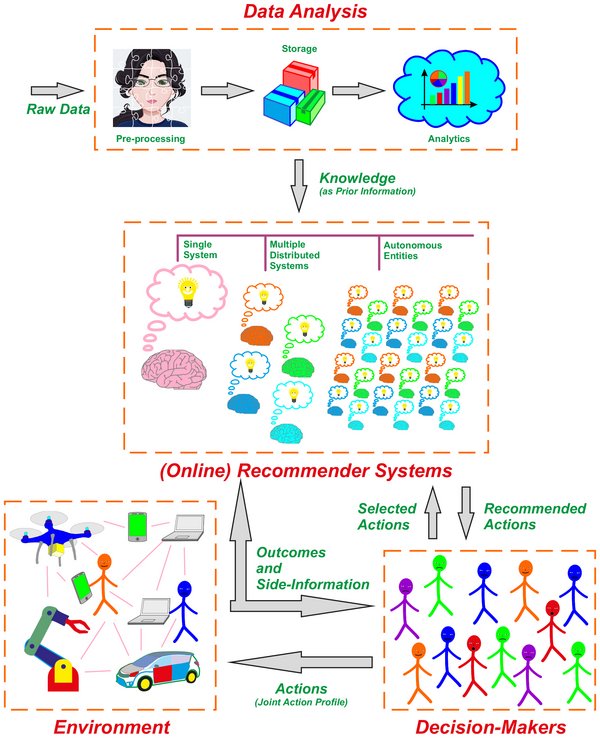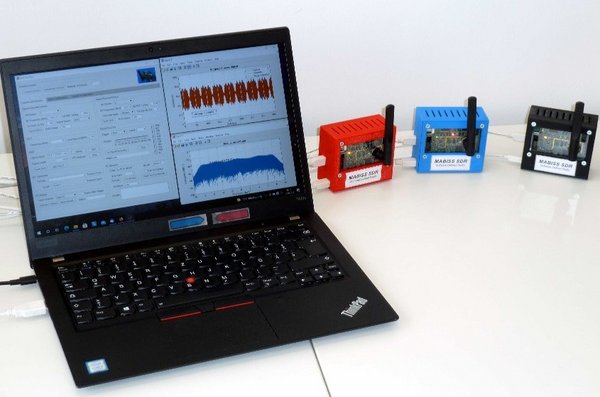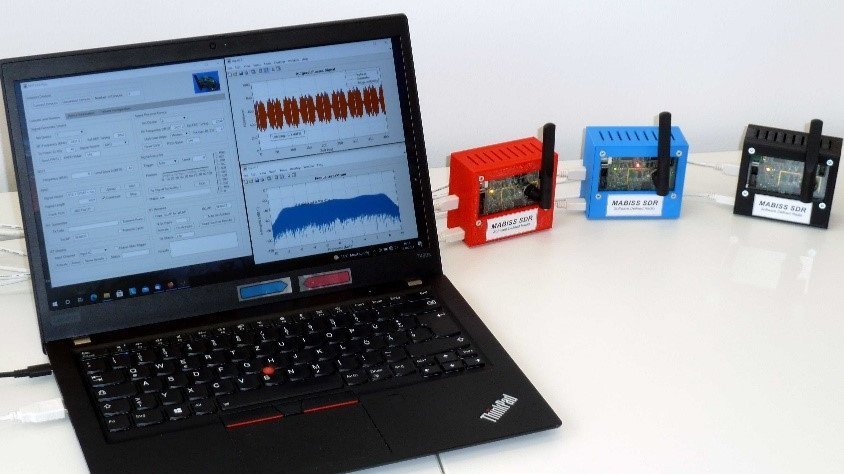The synergy between communication technology, cyber-physical system design, and artificial intelligence (AI) enables the autonomous operation of modern networked systems. For such infrastructures that underpin several critical missions, the vitality of efficiency and resilience is evident and unquestionable. Nevertheless, efficacy is often challenging to achieve due to the scarcity of resources and the inevitable implementation of technologies for opportunistic resource acquisition, which introduces volatility in the essential resource flow. Limited information availability, combined with noisy and obsolete signaling, aggravates the problem, especially in the presence of security threats and safety hazards. Besides, conflicting key performance metrics render the optimization problem multi-objective, and in a dynamic environment, the optimal operation setting drifts over time. Finally, explicit synchronization and coordination cause costly overhead.
The research group ‘Intelligent Technical Systems (Lernende Technische Systeme)’ contributes to the analysis and optimization of such a connected system of intelligent systems by forging an interdisciplinary approach. More precisely, the group develops interpretable and explainable control and optimization methods, also for multi-party scenarios, that are amenable to distributed implementation and robust to information shortage. Such algorithms recommend action to each system, or each controller, in a sequence of trials. Besides taking advantage of the a priori available data, they improve the decisions over time by learning from the past, guiding the connected systems to an efficient steady state, or accomplishing the defined mission. For such methods, the performance metrics include complexity, utility-to-cost ratio, constraint violation frequency, and the like.
From the theoretical point of view, the pillars of such methods are game theory and AI, and the application domain is the cornerstone. Application-wise, they are generic and pertinent in several domains, particularly engineering. These include renewable energy networks, swarm robotics, intelligent transport, and mobile communications, which is currently a focal topic for the research group ‘Decision Making’ from the practical perspective.
Example
The research group ‘Intelligent Technical Systems’ has developed its software-defined networking platform in the past few years. The platform building blocks are software-defined radios (SDR), as appears in the figure. The devices are embedded systems that can operate independently of a host computer. They consist of three modules, i.e., radio elements (such as transmitter and receiver), processors (based on FPGA), and interfaces to a computer for application control and data exchange. The collection of these three modules makes SDR devices “intelligent” to some level: They collect data by sensing, learn by running machine learning programs, and make decisions using decision-making methods based on AI. Besides, they are connected as they can communicate via the radio propagation medium based on various protocols and standards. Therefore, the platform shown in the figure is a connected system of intelligent systems. In such a platform, implementing AI-based decision-making strategies enables communications between any pair of devices with no central control and information about crucial variables such as channel quality. That can even cover mobile terminals, i.e., when the SDR devices move around, or uncertain energy availability, for example, when the devices obtain their required power at least partially via renewable energy resources such as solar cells.
As an example, consider spectrum allocation. In a wireless communication network, spectrum is a precious resource and permanently in excess demand; as such, intelligent spectrum consumption plays an essential role in the efficiency of a wireless network. That becomes achievable by implementing our AI- and ML-based decision-making algorithms in the processors of SDR devices. Via such strategies, each device decides about its transmission channel in consecutive rounds. By observing the outcome of each decision at each round, i.e., the achieved data rate, the algorithm adapts the decision. The ultimate goal is to obtain an efficient equilibrium in which the devices use the spectrum to the best possible, and the entire system remains steady.




